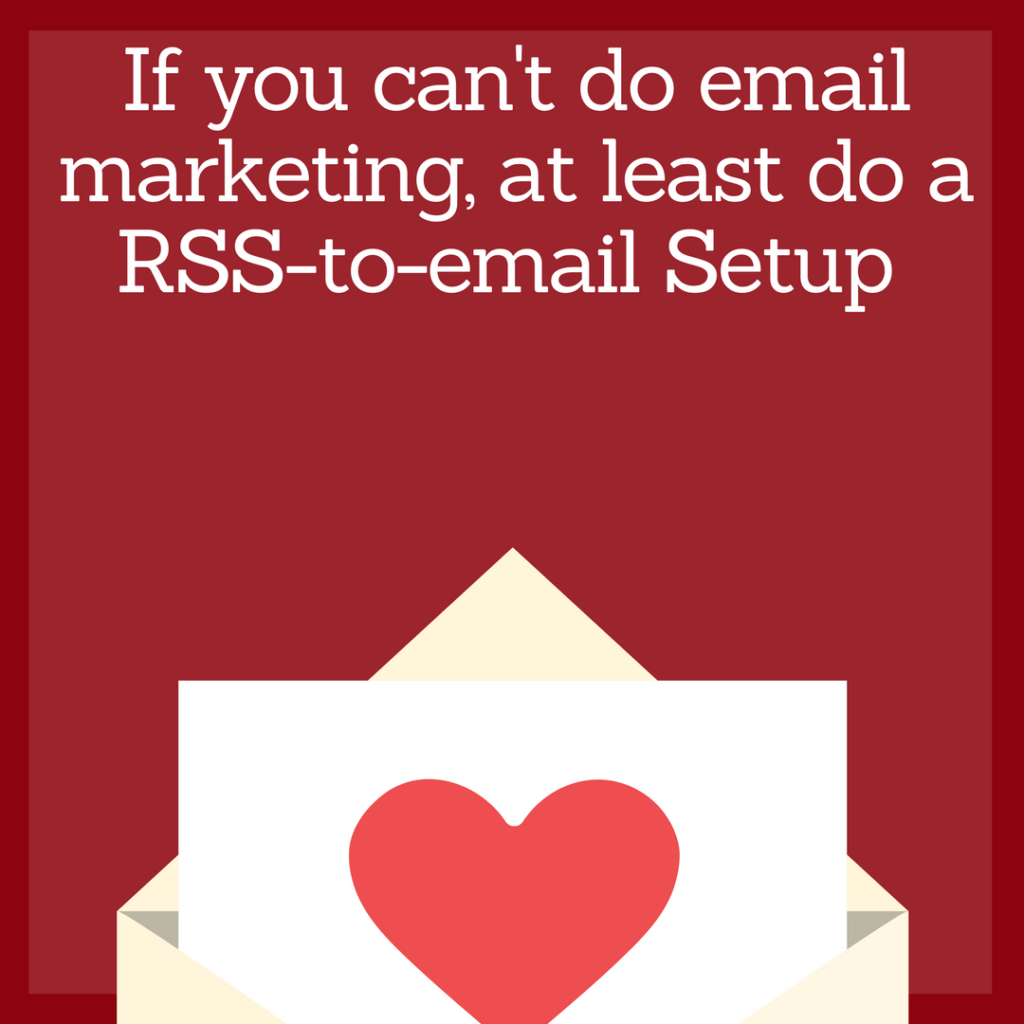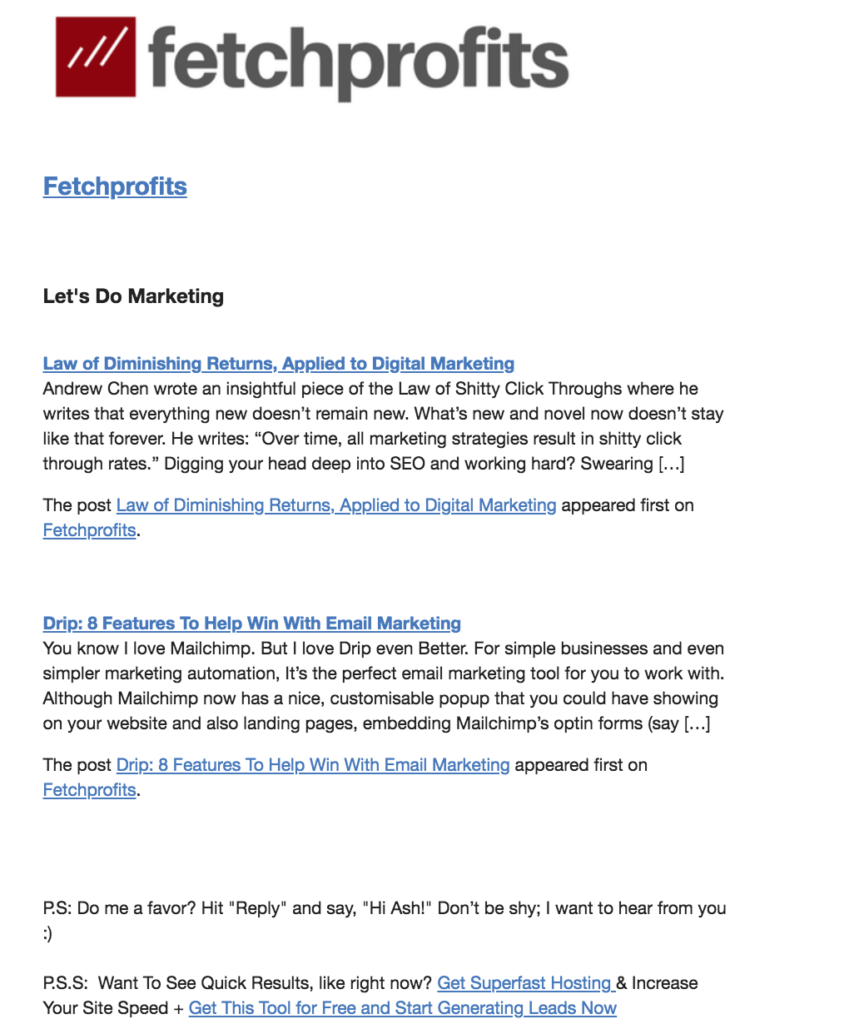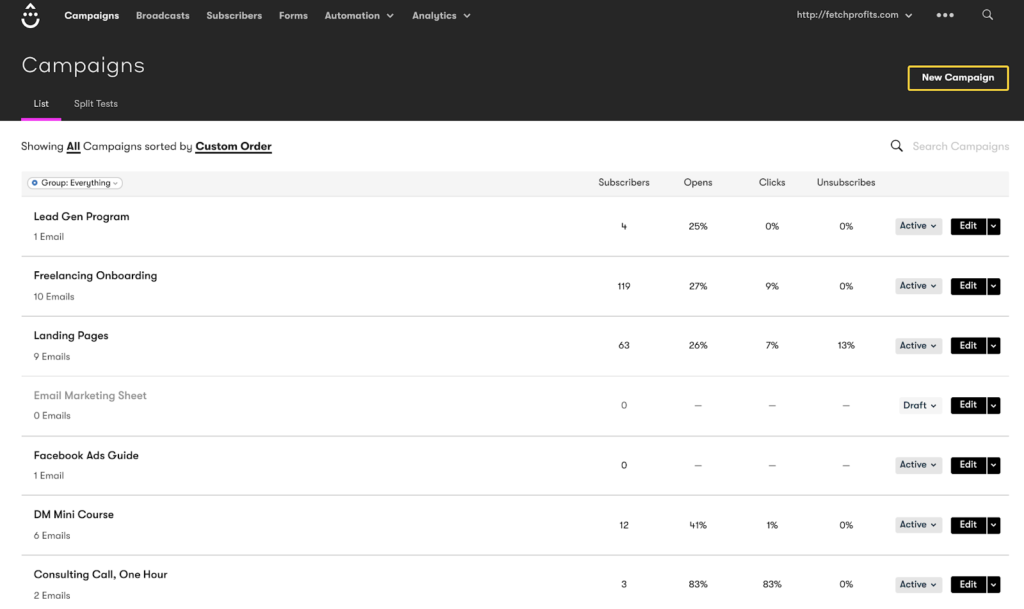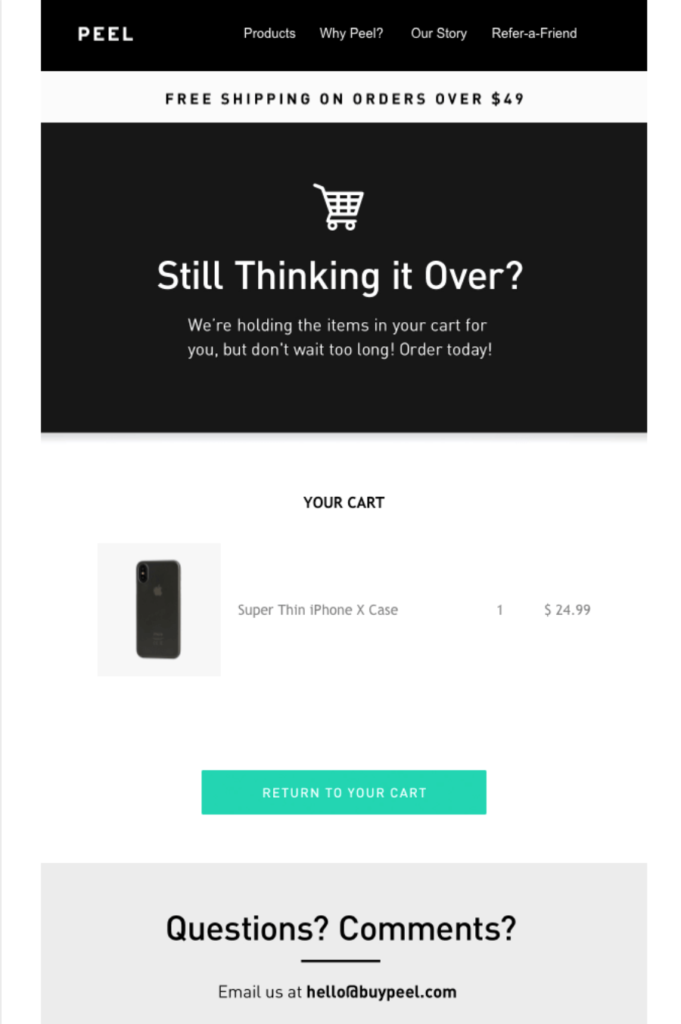Your website should normally be the first destination to help you start generating leads. It so happens that the importance of your website — as far as generating leads is concerned — is almost always overlooked.
Most business websites aren’t even designed from a marketing standpoint, let alone generate leads.
Whether you get 10 visitors a month or 100,000+ visitors a month, every website should be in a position to generate leads (and how you do this varies, depending on your business).
- Online publications can start to grow a list and build a list of subscribers.
- Bloggers will need dedicated subscribers
- Ecommerce stores can build a whole pipeline of potential customers. You can further segment potential leads or subscribers into separate segments such as those who only subscribed but never purchased; those who downloaded (or requested coupons) but never purchased; those who purchased up to $100; loyal customers, and more.
- Small businesses can also develop lists of subscribers who can later turn into potential customers (depending on what you sell).
It’s surprising that with all the email marketing stats proving something while businesses seem to be focusing on everything else that doesn’t matter.
I challenge you right now: Check out any random website right now and the chances are that that website isn’t doing much to generate leads at all.
Even if they are trying, they aren’t trying hard enough.
Generating leads is fine, but what do I do after?
You’d have to run some basic email marketing campaigns, and follow a few basic email marketing rules, to say the least.
There’s just no getting away from it. You can’t run a profitable business without basic email marketing campaigns to help you get what you want.
What you want are profitable email marketing sequences.
The best way to do it is to run at least some basic email campaigns. Every email marketing software worth its salt provides you with everything you need to run these basic email automation sequences, so what’s your excuse?
What are the basic email marketing campaigns you could run?
Here you go:
RSS-to-Email Campaigns
RSS-to email campaigns are “digests” of your previously published blog posts that are published one week earlier.
So, let’s say you published 3 blog posts in the first week of April 2018, all those three blog posts are sent out to your entire list of email subscribers on a particular day, the following week (On Monday of the second week of April 2018).
Here’s how that email digest (usually called as RSS-to-email campaign) looks like.
I use Drip to create an RSS-to-email Workflow that uses a template and sends out this email each week to all our email subscribers.
RSS-to-email campaigns are a great way to do multiple things with one shot: you get to nurture your leads (without selling anything); there’s brand recall and memory retention every time your email goes out (once a week mostly), and
The RSS-to-email campaigns only work when you have a regular blog publishing schedule (and that’s good for you). This is the only way this strategy works.
If you aren’t doing this, I don’t know what else you do?
Lead Generation + Nurturing sequences
If you have a website, you should be generating leads.
Make offers. Generate leads. Test things out. Repeat.
Or Integrate your LiveChat with your CRM and then to your email marketing platform.
However you choose to do it, you should always be generating leads. But there are many businesses that don’t do a thing “after” leads are generated.
Depending on the campaigns or the offers you created to generate leads, be sure to have an automated email series populated and sent at periodic intervals to your subscribers.
These aren’t optional. In fact, this is the only way you’ll get anywhere near a sale online.
Shopping cart abandonment (ecommerce only)
If you have a “buy now” button on your website, you are a prime candidate for a shopping cart abandonment email sequence.
Listrak found that the average shopping cart abandonment rate for e-commerce websites is at a whopping, wait for it, 78%. That’s like 78 people abandoned their shopping carts out of every 100 people who initiated checkout.
Various other studies found shopping cart abandonment rates to anywhere between 50 to 80%.
Dig your head into any study out there or check out any of those shopping cart abandonment stats and you’ll only come to this conclusion: eCommerce sites are bleeding money.
By the eCommerce doesn’t always mean full-fledged online stores built with Shopify. If you are selling anything online (services or products), you are a part of the eCommerce bandwagon.
If that’s true, then you are leaving money on the table when you don’t have a shopping cart abandonment email sequence working for you.
If you use Shopify, there’s an in-built mechanism to trigger emails for every person who abandons your shopping cart. Otherwise, major email marketing platforms such as Mailchimp and Drip also allow you to automate this process and trigger emails to nudge your “drifting and indecisive potential buyers” to come back and make a purchase.
You could also use Adroll to launch email retargeting campaigns to target potential buyers who didn’t make a purchase.
If you want to take to another level, you can launch dedicated campaigns (on Facebook or on Google Ads) to target leaving prospects to have them come back and make a purchase.
I don’t care what you do next with email marketing, but if shopping cart abandonment email marketing sequences isn’t a priority, what else is?
These are the three, absolutely mandatory, I-don’t-care-what-you-think-but-I-just said it email marketing campaigns that you should run, right now.




